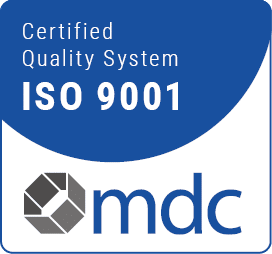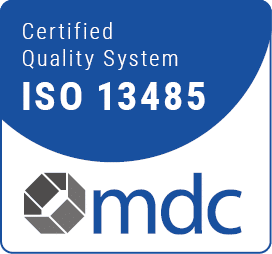To transfer the ultrasonic energy to the cleaning liquid, the transducers are usually attached to the bottom of the so-called oscillating tank in the case of small tanks/devices. In the case of larger treatment tanks, tightly encapsulated submersible transducers or transducer plates, equipped with a large number of transducers, are inserted into the tank in order to achieve the largest possible
sound-radiating surfaces.
The equipped oscillating tank itself is also exposed to the cavitation effect, whereby the tank bottom is also gradually attacked. This effect is also known from ship propellers or turbine blades, where cavitation also leads to a slow erosion of the metallic surface.
An important role in ultrasonic cleaning is played by the liquid, i.e. the cleaning medium itself. In any case, ultrasound enhances the chemical effect of the cleaning fluid. Furthermore, it transfers the ultrasonic energy to the object to be cleaned, must not impair cavitation, should dissolve the soiling and must also be environmentally friendly.
be disposable. The cleaning tank and items to be cleaned must not be attacked. Flammable liquids must not be used in ultrasonic baths due to the heating that occurs during the cleaning process.
Depending on the type of soiling Ultrasonic cleaning agent with an acidic, neutral or alkaline pH value. For medical use, there are preparations that disinfect and clean at the same time.
The cleaning effect is generally better the higher the bath temperature. The liquid is more degassed, contains fewer air bubbles and cavitation, occurs mainly on the dirt particles themselves, i.e. where it should act. It is best to clean at temperatures around 50 °C. This does not apply to the cleaning and chemical disinfection of medical instruments, as heating the bath fluid here leads to protein coagulation or encrustation of blood and tissue residues. Above 70 °C, the formation of cavitation decreases.
Ultrasonic cleaning is used in many areas. This includes the cleaning of machine parts and production parts in industry as well as the reprocessing of medical instruments in clinics and medical practices. One of the greatest advantages of ultrasonic cleaning compared to other methods such as brushing, blasting, spraying, etc. is the high intensity of the cleaning effect while at the same time protecting the items to be cleaned. The finest cavitation bubbles can develop their mechanical cleaning effect very effectively even in places that are difficult to access and thus enable previously unattainable cleaning results. This can be observed, for example, in engine parts such as carburettors, which are freed from deposits in the nozzles by means of ultrasonic cleaning. In addition to significantly improved cleaning results, ultrasonic cleaning also enables significant time savings compared to manual parts cleaning.
For the application of ultrasonic cleaning in the fields of medicine, laboratory and industry we offer Ultrasonic cleaner in a wide range of sizes.
By playing the videos, you accept YouTube's privacy policy.








